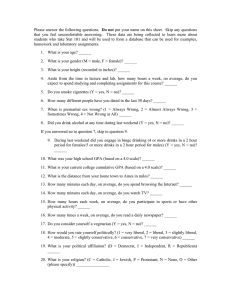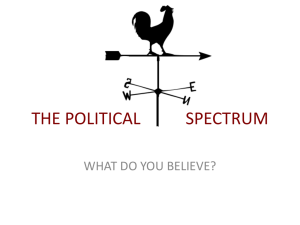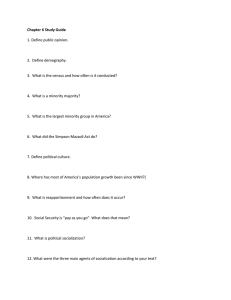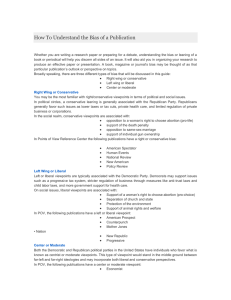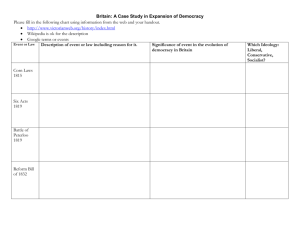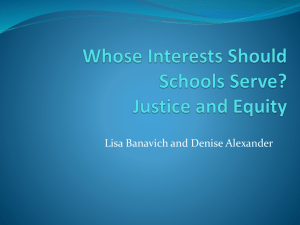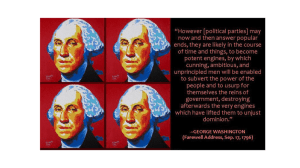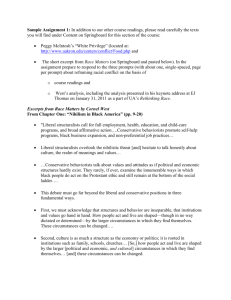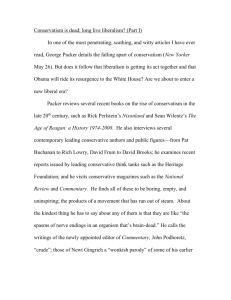Political Socialization Factors
advertisement
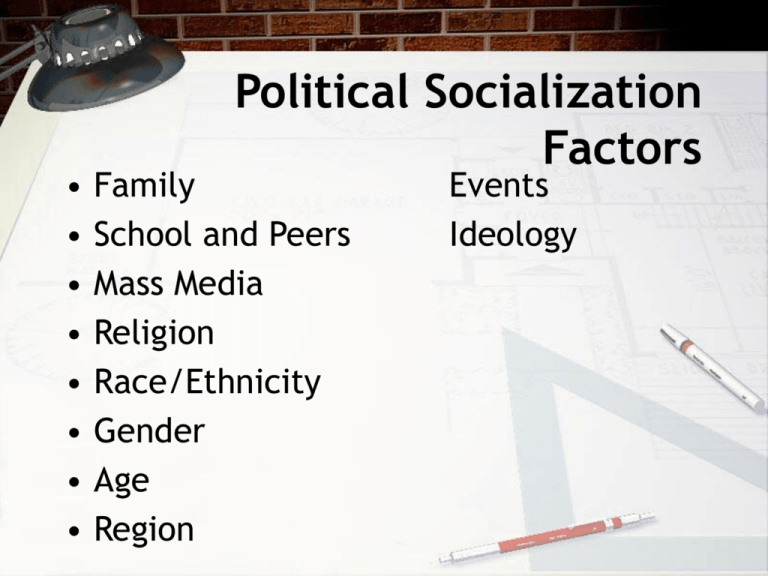
• • • • • • • • Political Socialization Factors Family School and Peers Mass Media Religion Race/Ethnicity Gender Age Region Events Ideology Family • Influence is based on 2 factors – Communication – Receptivity • Learn parent’s political values at a young age • 10 - 11 yrs. Children become more selective in their perceptions of the president – Dem. Households - critical of Rep president and visa versa. School and Peers • School teacher’s respect for nation & symbols helps build patriotism at a young age • “Weekly Reader” for elementary students fosters political awareness and civic duty • Peers have largest impact from middle school to high school • College has a liberalizing effect because students are called on to question actions and policies Mass Media • Taking on a growing role • Adult Americans spend 30 hours/week in front of the TV (children even higher) • 40%+ of those polled got their candidate info from Leno, Daily Show and Letterman • Choose to Lose & Rock the Vote are designed to improve voter turnout in youth • 2004 - 50% of voters under 30 reported the Internet as their major source of campaign info. 2008-55% Religion • 84% of all Americans over 18 consider themselves affiliated with a religion • Faith-based political activity occurred on the left: Civil rights, war on poverty, abolition of death penalty in 1970’s • On the right: Moral Majority and Christian Coalition played key roles in the election of Reagan • 2nd largest predictor of the vote behind party identification Religion continued • 2007: 51% Protest., 24% Cath., 2.7% other world religions, 2% Jewish, 16% no affiliation • Jews most liberal – Democrats in 2004 captured 74% of Jewish vote: 2008 - 78% • Protestant most conservative – Republicans in 2004 captured 54% Protest. Vote: 2008 - 54% • Pew Research Center Race / Ethnicity • Young black children show positive feelings about American society, then considerable lessening over time • Black children hold the president in lower esteem than white children - updated? • OJ trial (1995) revealed immense racial divide • Hispanic and Native Am. hold similar opinions – Both have high % poverty rates and targets of discrimination • Cuban Americans in Florida more likely to be conservative • Mexican-Americans are more likely to be liberal Gender • Women hold very different opinions than men http://www.people-press.org/typology/quiz/?pass • Unmarried women tend to be liberal • Women hold more negative views on war – Gap is lessening except for current war in Iraq • White men are the core of the Republican party Age • Senior Citizens, due to better health care, are becoming a political force – – – – – AARP Defeat school tax increases Pass tax breaks for themselves Increases in Medical benefits and SS Some fear & some welcome healthcare reform • Senior Citizens vote more • As boomers age, this group will become even larger and more influential Region • Immigrant settlements lead to regional influence • Most dramatic regional difference is between North and South • City is more liberal, rural more conservative • Republican: South, West and Midwest • Democrats: Northeast, West Coast • • • • • • • • • Events JFK assassination Challenger explosion Okalahoma City bombing Nixon resignation Fall of the Berlin Wall 9/11 - War on Terrorism Iran / Contra Clinton Impeachment Leads to faith or distrust in government Ideology 2004: Most Americans identify themselves as Moderate – 35% moderate – 30% liberal – 29% conservative • 2007: Most Americans identify themselves as Conservative – 36% conservative – 35 % moderate – 25% liberal • Gallup Poll October 2011 – 41% identify themselves as conservative – 36% identify themselves as moderate – 21% identify themselves as liberal http://www.gallup.com/poll/148745/Pol itical-Ideology-Stable-ConservativesLeading.aspx Are we predisposed to Political Beliefs? http://www.scientificamerican.com/arti cle.cfm?id=are-we-predisposed-topolitical-beliefs&ref=rss
